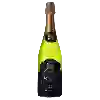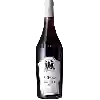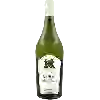
Château BéthaniePoulsard Arbois
This wine generally goes well with
Discover the grape variety: Poulsard
Poulsard is a red grape variety that originated in the Franche-Comté region. In 1732, it was qualified as a good grape variety with several others by the parliament of Besançon at the time. It currently covers nearly 300 ha. This variety has 3 approved clones: 296, 584 and 464. Poulsard has slightly hairy branches with long tendrils. Its leaves are yellow in color. Although its bunches are small, its berries are often medium-sized or larger. Poulsard is quite sensitive to scorching, spring frosts and coulure. It is also afraid of oidium, mildew and grey rot. This grape variety appreciates clayey, fat and marly soils. Its fertility is average, so it is preferable to prune it long. It buds quite early. Poulsard produces a wine with a light structure, fine and aromatic. It can be kept for years. This wine goes well with poultry, red meat, cheese and starters.
Last vintages of this wine
The best vintages of Poulsard Arbois from Château Béthanie are 2018, 2013, 2017, 2016 and 2012.
Informations about the Château Béthanie
The Château Béthanie is one of of the world's great estates. It offers 59 wines for sale in the of Arbois to come and discover on site or to buy online.
The wine region of Arbois
The wine region of Arbois is located in the region of Côtes du Jura of Jura of France. Wineries and vineyards like the Domaine Rolet or the Domaine Bénédicte et Stéphane Tissot produce mainly wines white, red and sweet. The most planted grape varieties in the region of Arbois are Chardonnay, Trousseau and Poulsard, they are then used in wines in blends or as a single variety. On the nose of Arbois often reveals types of flavors of butter, orange peel or banana and sometimes also flavors of quince, sour cherry or black currant.
The wine region of Jura
The Jura is a small wine region in eastern France that is responsible for some very special and traditional wine styles. It is close to the Swiss Jura, but quite distinct from it. Wedged between Burgundy to the west and Switzerland to the east, the region is characterized by a landscape of Wooded hills and the winding topography of the Jura Mountains. The Jura vineyards cover just over 1,850 hectares, forming a narrow strip of land almost 80 km Long from North to South.
The word of the wine: Local wine
Table wine, but with the origin indicated. It corresponds to a particular legislation: the freedom to use grape varieties is greater than for the AOC, but the quality criteria such as the approval tastings can sometimes be more demanding. The legislation is still evolving, but for the moment there are three levels: regional (e.g. Vin de Pays d'Oc), departmental and local (e.g. Côtes de Thongue).














